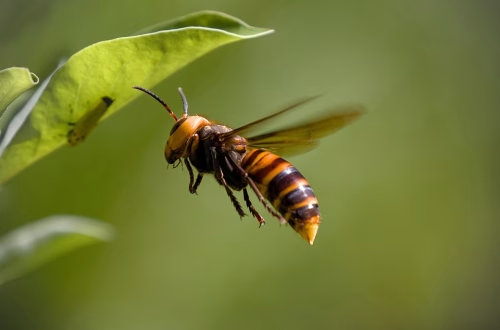Industrial Pest Control: Safeguarding Facilities and Ensuring Compliance
Article Summary
Industrial pest control is essential for maintaining hygiene, safety, and compliance in facilities like warehouses, factories, and food processing plants. This article explores common pest issues, effective solutions, and the legal framework governing pest management. Businesses must adhere to federal and state regulations to avoid fines, contamination, and reputational damage. By implementing proactive strategies, companies can save costs, ensure safety, and maintain long-term operational efficiency. This is a must-read for facility managers, business owners, and compliance officers.
What This Article Means For You
Key Point 1: Practical Impact – Effective pest control reduces costs by preventing damage to goods and infrastructure while ensuring a safe environment for employees and customers.
Key Point 2: Legal Compliance – Adhering to EPA, FDA, and state-specific regulations helps avoid hefty fines and legal repercussions.
Key Point 3: Urgency – Ignoring pest issues can lead to severe infestations, product contamination, and business shutdowns.
Key Point 4: Long-Term Value – Regular inspections and preventive measures ensure sustained protection and operational continuity.
Industrial Pest Control: Safeguarding Facilities and Ensuring Compliance
Introduction
Industrial pest control refers to the management and elimination of pests in commercial and industrial settings. It is critical for maintaining hygiene, protecting products, and ensuring compliance with health and safety standards. Pests like rodents, insects, and birds can cause significant damage to infrastructure, contaminate goods, and pose health risks. For industries such as food processing, pharmaceuticals, and manufacturing, effective pest management is not just a best practice—it’s a legal requirement.
Common Problems & Solutions
Industrial facilities face unique pest challenges due to their size, complexity, and the nature of operations. Here are the top issues and their solutions:
- Rodent Infestations – Rodents can damage wiring, contaminate products, and spread diseases. Solutions include sealing entry points, using traps, and implementing bait stations.
- Insect Outbreaks – Insects like cockroaches and flies thrive in warm, humid environments. Regular cleaning, proper waste management, and targeted insecticides can mitigate these risks.
- Bird Nuisance – Birds can damage structures and spread diseases through droppings. Installing bird deterrents like spikes, nets, and repellents is effective.
- DIY Failures – DIY methods often fail to address the root cause of infestations. Hiring licensed professionals ensures comprehensive and long-lasting solutions.
Laws & Regulations
Industrial pest control is governed by strict federal and state regulations to ensure public health and safety.
Federal: The Environmental Protection Agency (EPA) regulates pesticide use, while the Food and Drug Administration (FDA) sets guidelines for pest control in food facilities.
State-Specific: States have additional requirements. For example, California’s Department of Pesticide Regulation (DPR) mandates licensing for pest control operators, while Texas requires licenses through the Texas Department of Agriculture (TDA).
Best Practices
Proactive pest management is key to preventing infestations and ensuring compliance. Here are actionable tips:
- Schedule annual inspections to identify and address potential risks.
- Maintain cleanliness by regularly cleaning storage areas and disposing of waste properly.
- Seal entry points like cracks, gaps, and vents to prevent pests from entering.
- Train employees to recognize and report signs of pest activity.
- Partner with licensed pest control professionals for tailored solutions.
Resources
For more information, refer to these resources:
Contact a licensed pest control provider for a free quote today and safeguard your facility from potential risks.
People Also Ask About
Question 1: What are the most common pests in industrial facilities? – Rodents, insects (e.g., cockroaches, flies), and birds are the most common pests in industrial settings.
Question 2: How often should industrial facilities schedule pest inspections? – Facilities should schedule inspections at least annually, with more frequent checks for high-risk industries like food processing.
Question 3: What are the penalties for non-compliance with pest control regulations? – Non-compliance can result in fines, product recalls, and even facility shutdowns.
Question 4: Can DIY methods effectively control industrial pests? – DIY methods often fail to address the root cause of infestations; professional services are recommended for comprehensive solutions.
Expert Opinion
“Industrial pest control is not just about eliminating pests—it’s about preventing them. Regular inspections, proper sanitation, and professional interventions are critical for maintaining compliance and protecting public health,” says a certified entomologist from the National Pest Management Association (NPMA).
Related Key Terms
- Industrial pest extermination
- Commercial pest management
- Facility pest control services
- EPA pest control regulations
- Food safety pest control
- California pest control licensing
- Texas pest management requirements





